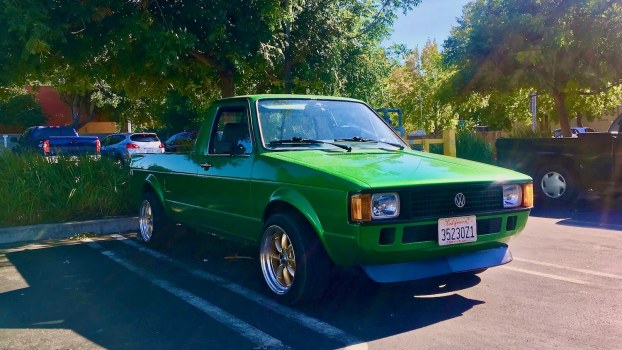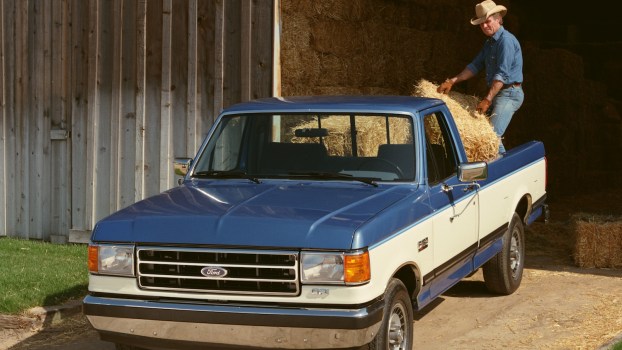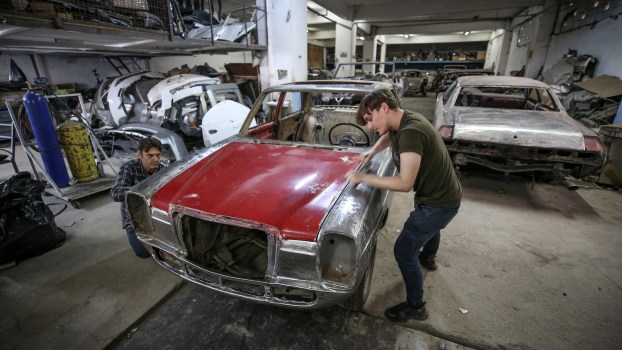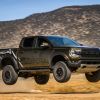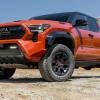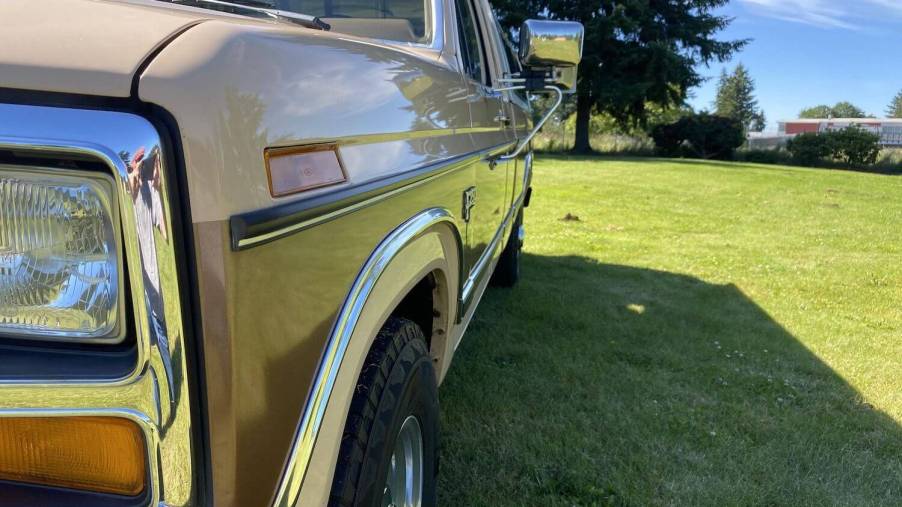
Is This ‘Bullnose’ Ford the Perfect Classic Truck Bargain?
I might own a Ford now, but I grew up driving classic Dodge trucks. And I can see the appeal of General Motors trucks too. So how do you choose the perfect classic truck? I believe it comes down to cost, capability, and looks. For these three reasons, the “bullnose-era” (1980-1986) Ford F-Series might be the perfect classic truck.
A 1980-1986 (7th-gen) F-Series truck won’t break the bank
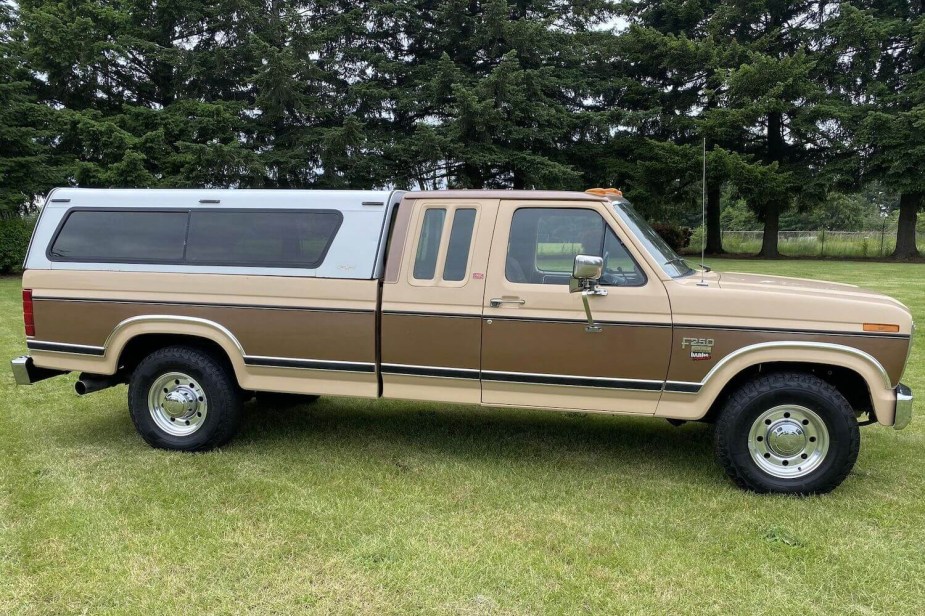
The word is out: The torquey diesel pickup trucks of the 1980s and 1990s offer towing, hauling, and mpg numbers nearly equal to modern half-tons. At the same time, they are machines from a bygone era when trucks were simpler. And they boast classic truck good looks to boot.
This is why you often see first-gen Dodge Rams with Cummins engines resell for $25,000 or more. But that’s nearly the price of a brand-new Ford F-150 XL. That sort of change will get you a gently-used pickup truck from this decade. Still, similarly equipped Ford pickup trucks are changing hands for much less.
Compare, for example, the rust-free diesel-powered 1986 F-250 that sold on Cars & Bids in 2022 for just $6,500 (pictured). Diesel seventh-generation Ford F-Series projects have sold on eBay for as little as $1,580. One 4WD in showroom quality commanded $12,995.
A classic seventh-generation Ford pickup truck is a workhorse
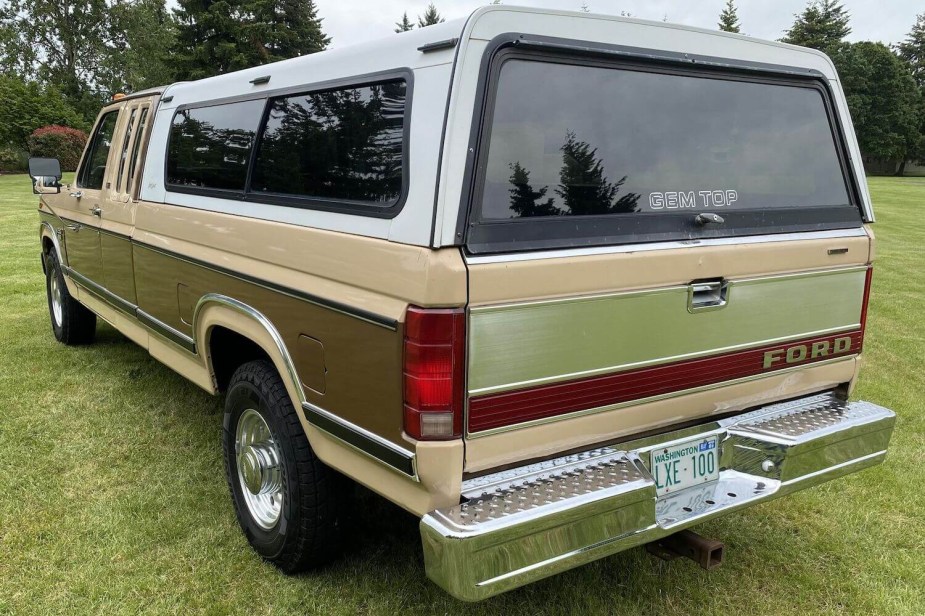
Ford partnered with International Harvester to offer a stout 6.9-liter diesel V8 in its seventh-gen F-250 and F-350 pickup trucks. At this point, International had moved out of the pickup truck market, and its diesel engines were truly industrial-grade.
The 1986 diesel F-350’s maximum towing capacity was 10,000 pounds. A gas-powered V8 F-150 of the era got just 12 city/13 highway mpg (12 combined). The diesel did considerably better. The EPA doesn’t rate heavy-duty trucks’ mpg, but forum posters agree their old V8-diesel Ford trucks can get 16 mpg. A well-tuned one may even see 20 mpg on the highway.
For its next generation of diesel pickup trucks, Ford began to offer a turbocharged diesel. The truth is that this was just an aftermarket Banks kit installed on the International engines at Ford’s factory. Installing a turbocharger, such as this exact Banks unit, on your seventh-gen Ford will dramatically improve its performance. The bullnose-era Fords also had to make do with a three-speed automatic and a four-speed manual. Many owners swap the later five-speed into the manual trucks or an aftermarket overdrive into the automatic trucks. The diesel that sold for $6,500 on Cars & Bids already had the turbocharger and overdrive installed.
The bullnose Ford F-series pickups have classic truck appeal
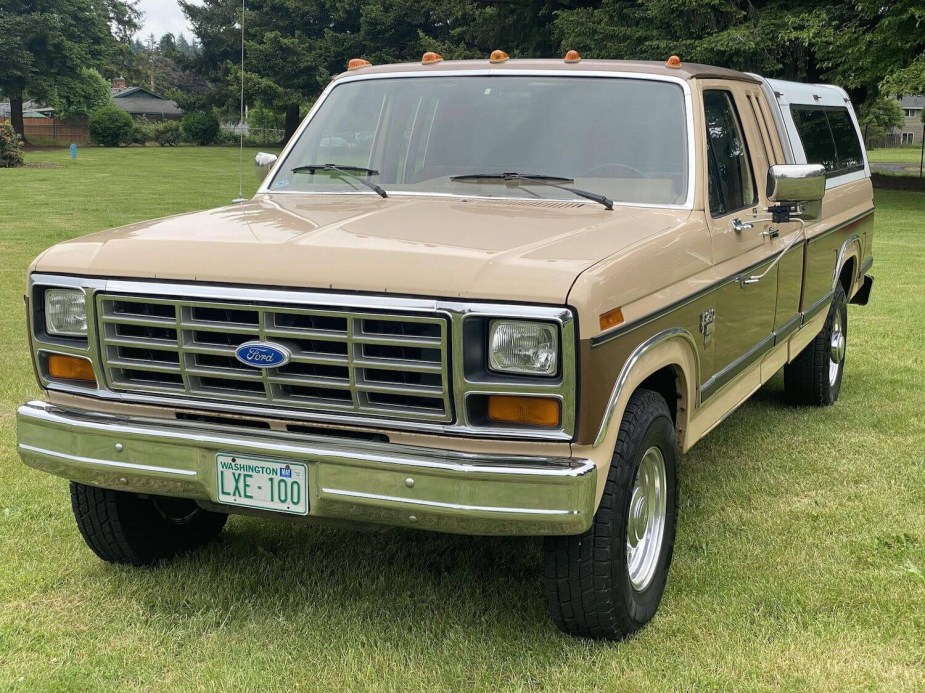
There is nothing quite like the pontoon-fendered pickup trucks of the 1940s or the art-deco-styled pickup trucks of the 1960s. But while such a truck would make a fantastic project, it will never replace a modern truck you use for towing. Many of the classic diesels have a more industrial style, which appeals to many. But the bullnose-era Ford F-Series trucks have vintage good looks.
The bullnose-era Ford trucks are not for everyone. But painted in a single color and stripped of some chrome, they look much more like the later square-body muscle trucks. On the other hand, a bullnose-era Ford with certain two-tone paint options and stock chrome looks much more like a classic truck from the 1970s.
The classic pickup truck you choose for your next project will probably come down to preference. But you have to admit, the bullnose-era Ford F-series pickup trucks have all the makings of the perfect classic.
Next, find out whether the second-gen Cummins is a classic or see a 1986 Ford F-250 diesel in action in the video below:
